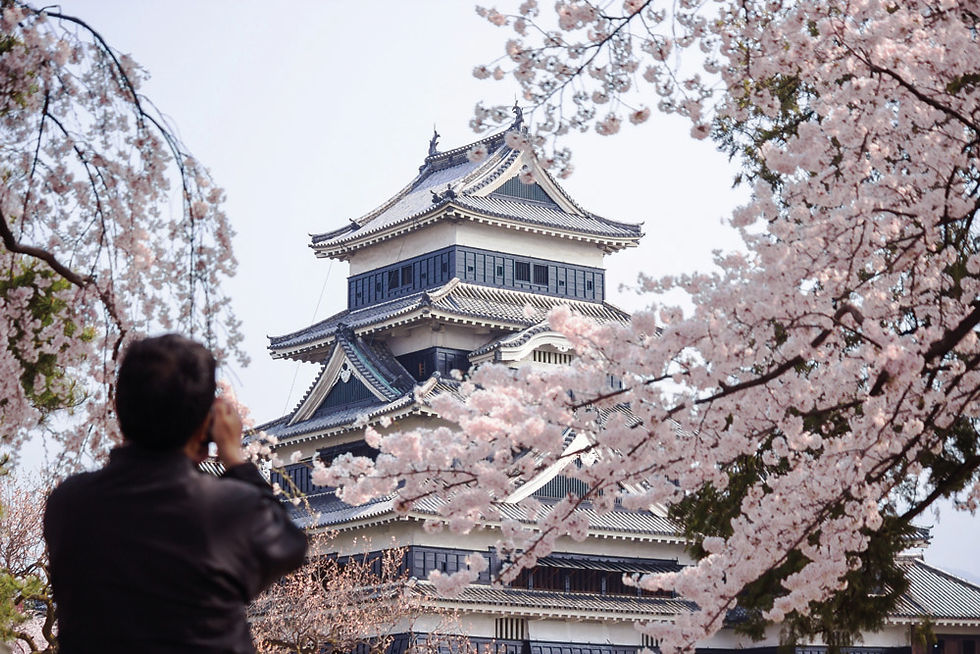
The Japanese have a word for it: 'hanami'.
It means looking at flowers, and it's a national pastime.
Starting in late January in the subtropical south, the cherry blossoms sweep across the country, reaching Tokyo and Kyoto in the first week of April, though this can vary due to the weather. In the two weeks after they first bloom, locals and visitors alike stroll, sit and picnic beneath the beautiful laden boughs.
Before long, the entire nation has turned a shade of pink.
The flowers are symbolic of Japanese philosophy and culture. A token of new beginnings symbolising the fleeting nature of life, the cherry blossom is more than just a pretty flower and Japan has more to offer than flora.
This country sparks images of geisha, sushi and neon-lit mega cities. Maybe sake too, and a tea ceremony as well as a few crazy kids dressed up as cartoonish Manga characters.
Japan was one of the few countries never colonised by Europe and between the 17th and 19th centuries, isolated itself from the rest of the world. Because of these long years without outside influence, many fascinating traditions developed and have become so ingrained in the culture that they remain integral to modern life.

People still worship at ancient temples, geisha still entertain, people still dress in kimonos for special occasions and everyone still eats traditional, seasonal food. But they also travel by bullet train, many live in huge modern cities, go to robot restaurants and maid cafes, dress up as their favourite Manga characters and sing karaoke.
Tokyo might look like the ultimate modern mega city, and it pretty much is, but amongst the sky-scraping buildings and neon billboards there is plenty of traditional culture too. Wander through Senso-ji, the city’s oldest temple or the woodland Meiji Shrine to witness a magical ritual performed by local worshippers.
Imperial capital for over 1,000 years, Kyoto is the best place to discover traditional Japan. You can explore temples and shrines such a Kinkaku-ji and Fushimi Inari-taisha, take part in a tea ceremony, learn the art of origami and eat kaiseki... you can even dress up as a geisha!
A world famous name for a tragic reason, we recommend Hiroshima because it perfectly represents the nature of the Japanese people. Almost completely rebuilt after 1945, it is a friendly, cheerful and forward-looking city that is a pleasure to explore.
Called the birthplace of Japanese culture, Nara was imperial capital before Kyoto, and is a pleasant and relaxed little city. Explore the 8th century Todai-ji and meet herds of friendly Sika deer – in the Shinto religion they are believed to be messengers of the gods.

Japan’s most iconic sight - the perfectly symmetrical cone of Mt Fuji - is not only visually impressive but an essential element of national culture. It has long been worshipped by Buddhists, as a gateway to another world, by Shintoists, as the very spirit of nature, and by the written word and paint brush of many a writer and artist.
Visit year-round to immerse yourself in the beauty of Japan, but we recommend the spring to experience the cherry blossom in full bloom (though be warned, this needs to be booked well in advance).
Come 2019 and 2020, with two major sporting events, it’s going to get even more popular, which is why we urge you to go before the masses descend. 2018 tours with Wendy Wu are available and ready to book, get in touch for more details.

